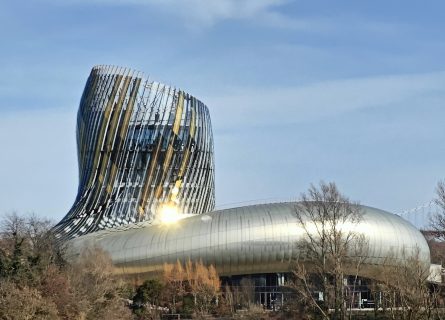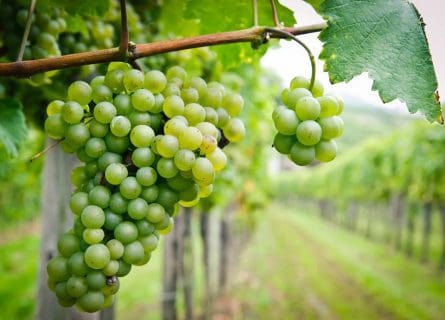
Chinon Travel Guide
Discover Chinon: Where History, Vineyards, and French Elegance Converge
Renowned for its gorgeous Château – the relics of royal days gone by – the beautiful Loire Valley is rich in history and architecture. Chinon, a small and captivating town, has always been at the center of the historical and cultural life in the area and has been an important center since medieval times. As the Loire River runs through France’s heart, so the region captures the essence of the French way of life. Its sophisticated cities, exquisite landscape, and excellent food and wine add up to a modern paradise for the visitor.
Chinon’s historical importance derived mainly from its highly strategic position on the bank of the river Vienne, just before it joins the Loire. Since prehistoric times, these rivers formed the major trade routes in central France, allowing easy access to the sea at the port of Nantes on the western coast and to the Ile-de-France on the east. Chinon offered a natural crossing point using a central island in the Vienne, making it an essential trading stop for passing merchants.
Small wonder then that the Romans, sensing its potential, established a base here in the 1st century AD. The rocks dominating the shore of Chinon provided a natural fort against invaders and protection against the river’s annual flooding. Chinon thrived as a Roman army garrison, making the village their home, living in the protected fort, and benefiting from passing trade. Unfortunately, this was insufficient to prevent the fort from falling to invaders, and the Romans lost control in the 4th century AD.
One of the first monasteries was built in the 4th century AD. Throughout the Middle Ages, the monastery flourished, being rebuilt and extended four times; the eventual complex contained a large and highly decorated church, a cloister, and a square of canons’ residences. The town’s importance grew as Chinon was fortified as a stronghold by Theobald I, the Count of Blois, in 954. The best times, however, were yet to come.
A new golden age dawned in the Middle Ages while Henry II was King of England. During this time, Henry constructed a massive and awe-inspiring Château on the site of the Roman base, encompassing an area over 500 meters long. It became one of the King’s favorite residences, and Chinon Castle and the entire region received constant attention, always looking as beautiful as possible. Trade increased, and Chinon prospered.
Appropriately, Henry II was buried in his beloved castle after being defeated by his sons Richard and John. Chinon hosted famous visitors in the 13th century, not least three senior offices of the Knights Templar, including the Grand Master, Jacques de Molay. The Knights Templar were responsible for protecting the Holy Grail’s truth and were incarcerated in the castle before their execution in Paris!
The 13th century saw Chinon’s profile rise as it became part of the Royal Estates, which belonged to the French crown. The town played a crucial role in the hundred-year war between England and France when the French ruler Charles VII would spend significant time there. Charles and his royal court made Chinon famous in the region, attracting visitors regularly. In the 15th century, Joan of Arc, the peasant girl who rose against the English, could often be seen among the visitors to Chinon, paying a visit to Charles VII. In the Castle at Chinon, Joan of Arc urged Charles to rise against the English and paved the way for her campaign against France’s oppressors. Trade increased, and the region became increasingly known for the quality of its fine wines.
As is often the case, Chinon’s good fortune would end, and during the 16th century, the town lost its last royal inhabitants. Then, in 1562, the Château of Chinon came into the possession of the Huguenots, who took refuge during the years of persecution from the Catholic Church. The Château was subsequently abandoned until 1793 when, during the beginning of the French Revolution, it was temporarily occupied by the Vendeans. This group opposed the French Revolution and tried to restore the status quo. Their base was just south of the River Loire, and they fought hard to reclaim France.
After the Revolution, the Châteaux were left to decay, with many Chinon nobility meeting a sticky end at the guillotine. It was not until Emperor Napoleon III’s reign that the castle was partly restored, supervised by no other than the author of Carmen! Chinon enjoyed a relatively stable existence until the onslaught of World War I. The town was relatively unaffected by the Two World Wars of the 20th century and enjoyed a stable post-war history as a center for tourism and wine.
Today, Chinon attracts visitors far and wide as wine lovers journey on their pilgrimage through the Loire Valley. An essential port of call with its superb restaurants, inviting streets and squares, and fascinating history, Chinon charms all those who visit. It is astonishing how much history this relatively small town has been privy to over the centuries. No other town in France has witnessed many historical events and could offer such a rich cultural legacy – the perfect base to explore the majestic Châteaux of the Loire.
-

Loire valley Vineyards Gastronomy & Wine
Like every French town, Chinon has its share of typical Bistros and enjoys a rich and varied gastronomy thanks to its riverside location. Local cuisine is mostly based on fresh fish, wild game, and lamb, perfectly matched by local wines. High-quality goat’s cheeses are found in abundance; try them with a Sancerre wine for gastronomic heaven! The old quarter of Chinon has many good restaurants; Chapeau Rouge is one of our favorites.
The town is surrounded by some of the best vineyards in the Loire Valley, with the Chinon appellation home to several famous properties. Chenin Blanc and Cabernet Franc are the two dominant grape varieties here: complex dry whites, delicious sweet whites, and elegant light reds to satisfy even the most demanding wine lovers.
Gastronomic Guide to the Cusine of The Loire Valley: Read more
Nearby Wine Regions
-
 Explore the diverse and luxurious Loire Valley, a hidden gem for wine lovers. From fresh Sauvignon Blancs to robust Cabernet Francs. Plan your trip today! Read more
Explore the diverse and luxurious Loire Valley, a hidden gem for wine lovers. From fresh Sauvignon Blancs to robust Cabernet Francs. Plan your trip today! Read more
Highlights
-
Château De Chinon
The city’s most famous monument is the magnificent Château De Chinon. Built-in 945 by Theobald I, Comte De Blois, the castle served as a mighty fortress and protector of the town of Chinon. Henry II was notable for making the Château his residence. Divided into three enclosures, each separated by a deep dry moat and has remained mostly unchanged over the centuries since its restoration by Emperor Napoleon III. A highlight for the visitor is the clock tower, over 115 feet high!
-
Château Durivau
One of the most spectacular and enchanting Château in the region, Château Durivau, is easily accessible from Chinon. Visitors to this delightful property love strolling around the fairytale gardens, the perfect spot to enjoy a long lunch in the shade. Bliss!
-
Museum of Art and History
The museum in Chinon is notable for housing the supposed remains of Joan of Arc, later exposed to be the remains of an Egyptian Mummy. It houses an impressive collection of artwork where tourists can explore the history of the region and its most famous heroine, Joan of Arc.
-
Couly Duteil Vineyard tour
Last but by no means least, every tourist should visit at least one of the great wine estates in the region. Domaine Couly Duteil would be top of our list, not least because of its friendly owners. We can organize private tours in English with an overview of the vineyards and the history of this beautiful estate, not to mention a stellar wine tasting!
Recommended for you
More information
If you would like us to customize an exclusive luxury tour, contact us and let us know your travel plans. We offer luxury food and wine tours for private groups of a minimum two guests. In addition, all of our private, chauffeured tours are available year-round upon request.














